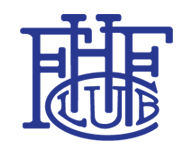The History of Forest Hill Field Club
Forest Hill Field Club originated in Newark in 1891 as the Forest Hill Tennis Club located near the corner of Grafton and DeGraw Avenues. On July 4th, 1896, the club expanded and opened its original nine-hole golf course for play at the Soho site.
In December of 1896, a clubhouse was established, and the new club was then operating under the new name of Forest Hill Field Club. On May 30, 1906, the first, original 9-hole course, expanded into a full 18-hole course. As was the norm in those days, each hole had its unique name. The hole names were as follows: Prospect, Jonah, Meadow, Willows, Tow Path, Bridge of Sighs, Teaser, Orchard, Halfway, Copper Mill, Hurdle, Smoke Stack, Stone House, Little Joker, Soho, Straight Edge, Blind Tom, and Home. The dues in 1909 were roughly $40 (per year) for active members and the initiation fee was $25. In 1917, the annual greens expenses soared to $10,007. The shock factor to the membership was great as those costs just two years before were $5,603. To reduce damage to the course, members of Essex Troop, Squadron A, a local riding academy, were asked not to ride over club property. In 1918, there was an increase in caddy fees to whopping 60 cents for 18 holes. This was done to maintain parity with other clubs in the area. In 1922 the Membership was treated to an exhibition golf match which paired Walter Hagen and Joe Kirkwood against Fred MacLeod of Washington DC and Bobby Cruikshank of Shackamaxon Golf Club.
1926 marked the final year of play at the Soho site. The major part of work that was done on the present site of FHFC, was performed in 1925. The following year was devoted to the growth and development of the golf course. Play began shortly after, at the current site, in 1927. In 1937, the Metropolitan Golf Association held its Open Tournament at our Club, Forest Hill Field Club. On the second day after Sam Snead had completed his round with a record-breaking score of 65, a severe rainstorm made the course unplayable, causing the cancellation of play for the day. Snead lost the 65 and the Tournament was won by Jimmy Hines with a total score of 279. In 1940, Craig Wood won the Metropolitan Open at Forest Hill Field Club with rounds of 64,66,68 and 66 for a total of 264. Wood had only three fives, all made on the third hole. Only two professionals bettered par for the 72-hole event—Wood and Ben Hogan.
In 1941, the first Silver Putter was held. This legendary two-day medal event is a year-end tradition and is conducted with leader boards and a large gallery of members present. In July of 1942, the legendary Emery Thomas became our Golf Professional. The assignment was provisional until January of 1943. He retired from the position in July 1969.


